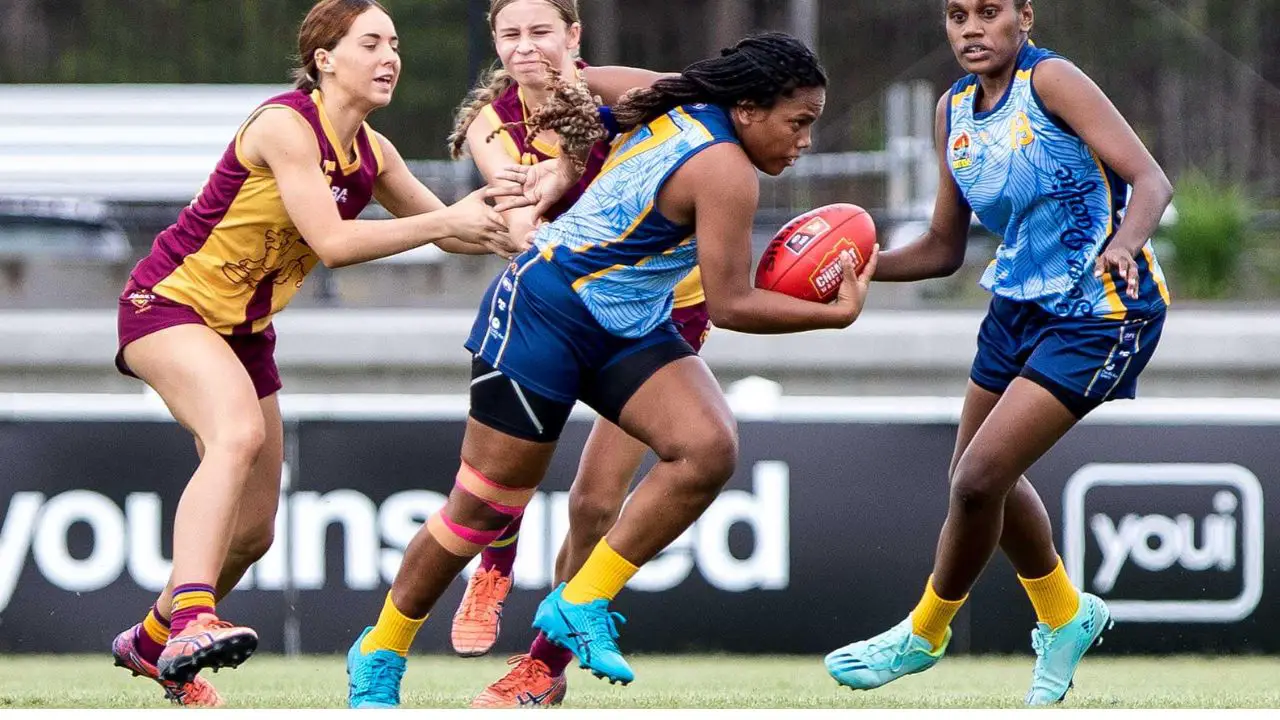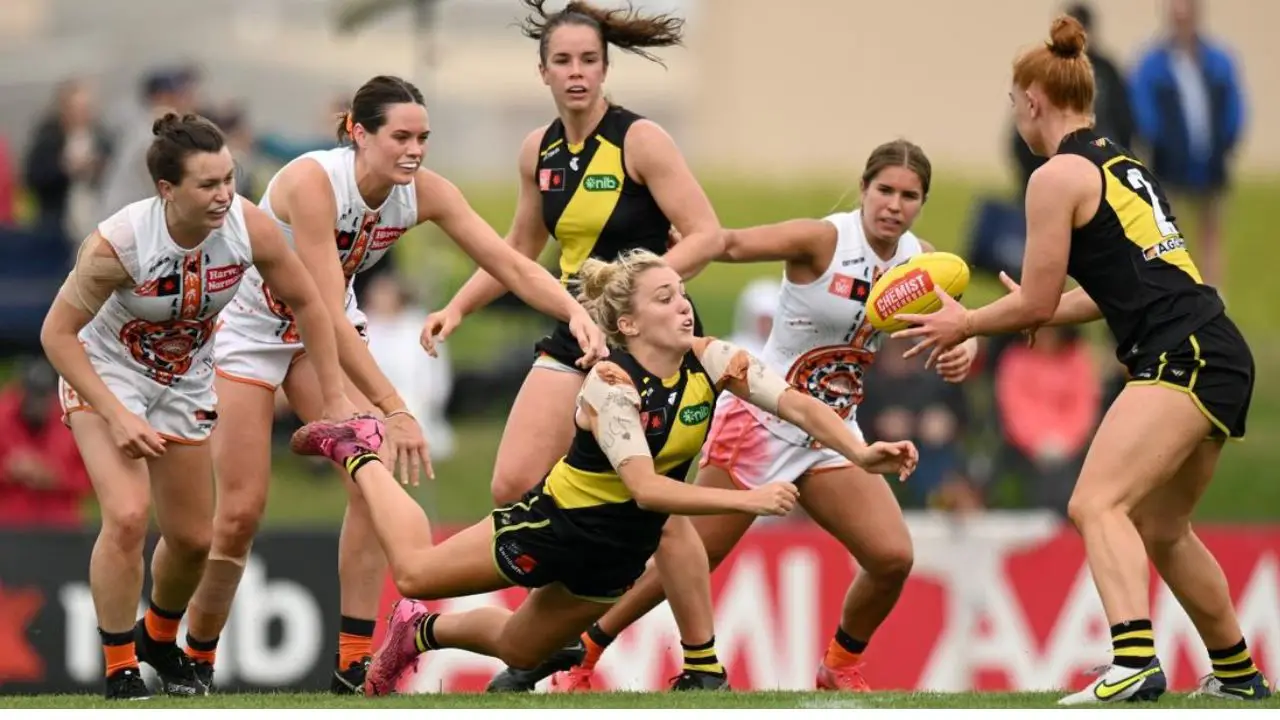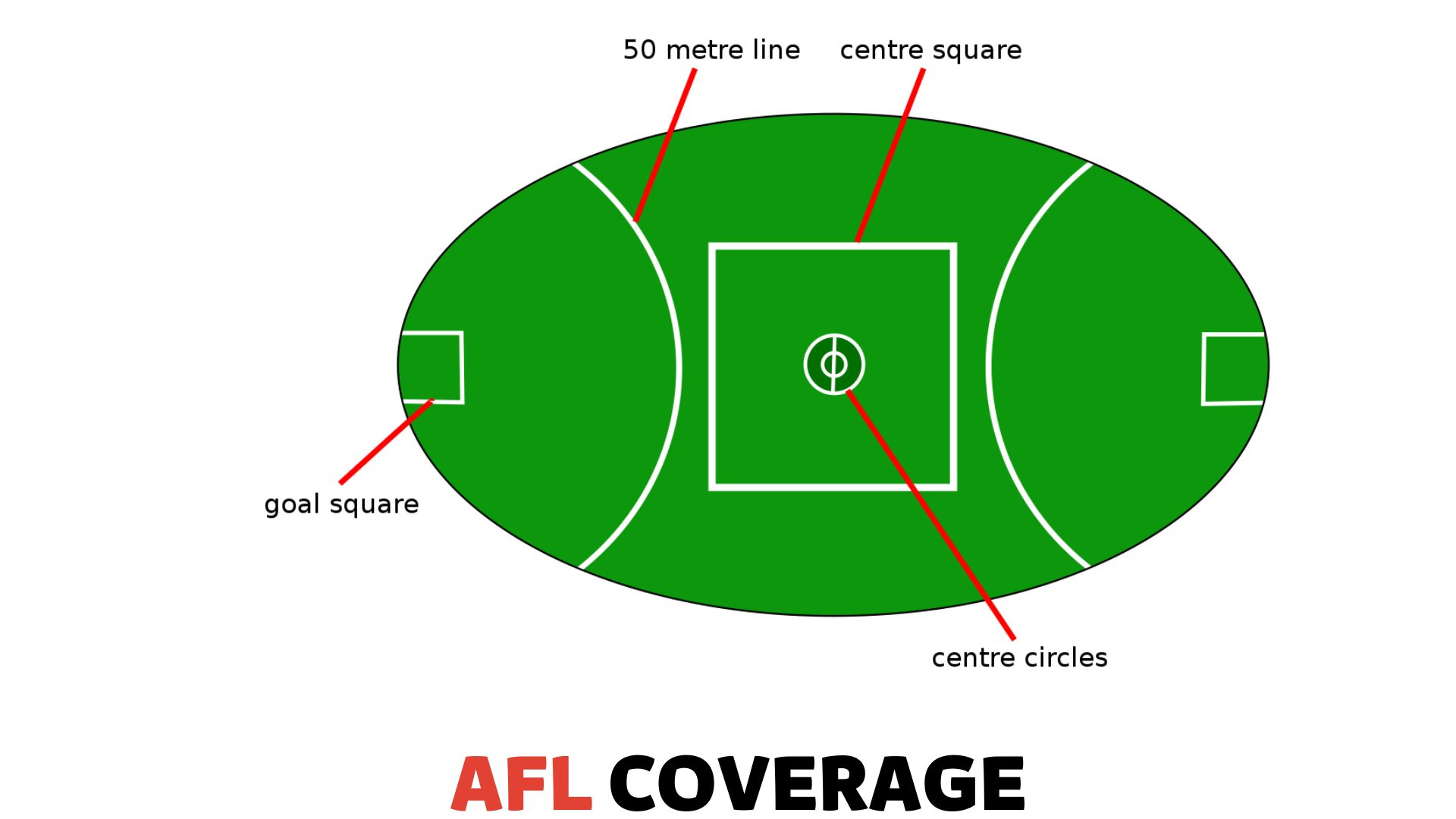Determining which sport, AFL or NRL, is better, is subjective and depends on personal preference. Both offer exciting and unique elements to their fans.
Australian Rules Football (AFL) and National Rugby League (NRL) are among the most followed sports in Australia, captivating audiences with their distinct styles and rich histories. AFL, with its larger oval field and high-flying marks, emphasizes speed, agility, and endurance, while NRL focuses on strength, strategy, and tactical collisions in a more rectangular pitch.
Fans of the sports generally rally around the pace and aerial prowess displayed in AFL, or the tactical physicality that defines NRL matches. As cultural institutions, both leagues enjoy passionate support and boast a storied tradition of athletic excellence that continues to evolve and attract new fans year after year. Whether you’re thrilled by the acrobatic catches of AFL players or the powerful tackles in NRL, both codes offer a full suite of excitement for sports enthusiasts.
Roots Of Rivalry: AFL Vs NRL
Two titans of Aussie sports clash in an ongoing debate: AFL or NRL? This rivalry has deep roots, stretching back over a century. Fans often draw lines in the sand, but nothing is more defining than history itself. Let’s dig into the past to find out how each sport carved out its place in Australia’s heart.
Historical Origins Of AFL
AFL stands for Australian Football League, once known as Victorian Football Association. Its story starts in 1858 in Melbourne. AFL stems from football games played in English public schools. Yet, it evolved into a unique sport, shaping Australian identity.
- Tom Wills and friends created the first rules in 1859.
- These rules led to the first game between Melbourne Grammar and Scotch College.
- The first official league, the VFA, kicked off in 1877.
Historical Origins Of NRL
The National Rugby League, or NRL, has its own rich history. Unlike AFL, NRL found its beginnings in the rugby football of England. The split from Rugby Union to Rugby League happened in the early 1900s, driven by player payment disputes.
- Rugby League’s first season in Australia started in 1908.
- This followed rule changes to make the game more exciting and spectator-friendly.
- New South Wales Rugby League was the first governing body.
Cultural Impact And Fan Base
The ‘Cultural Impact and Fan Base’ of a sport reflects its role in society. AFL and NRL both have passionate fans. They shape Australian culture and community. Let’s dive into their impacts.
AFL’s Role In Australian Culture
Footy is not just a game in Australia, it’s a season. The Australian Football League (AFL) is the heart of many traditions. It’s a source of local pride. Families and friends gather for matches. They share cheers, jeers, and tears. Teams become legends. Players turn into heroes.
- Grand Final day is almost a holiday.
- Pies, chips, and scarves mark game days.
- Schools hold ‘Footy Day’ activities.
The AFL shapes Aussie rules into life lessons. It helps local economies with jobs and tourism. The AFL Women’s (AFLW) empowers female athletes. The sport crosses age and gender. It unites Australians within and beyond borders.
NRL’s Influence On Community Identity
The National Rugby League (NRL) knits tight community threads. It fosters a sense of belonging. NRL teams are the backbone of town pride. They affect local identity.
| Community Impact | Examples |
|---|---|
| Charity support | Teams back local causes. |
| Youth programs | Clubs host skills clinics. |
| Social cohesion | Fans unite, regardless of background. |
State of Origin ignites state rivalry. It showcases top-tier rugby talent. The NRL fosters Indigenous culture through the All Stars game. It cherishes Pacific Islander heritage as well. Through these events, NRL cements its role in diverse communities’ hearts.
Gameplay Contrast: Field Dynamics
When we talk about AFL (Australian Football League) and NRL (National Rugby League), the field itself plays a huge part. It’s not just the shape, but the dynamics it brings to each sport.
AFL’s Unique Oval Field
AFL’s oval field is vast and open. It’s like a giant playground for athletes. Here’s what makes it special:
- Size: about 135 to 185 meters lengthwise, and 110 to 155 meters widthwise.
- Surface: Grass, allowing for a variety of movements.
- Play: Players run, bounce, and kick the oval ball.
- Goals: Four posts at each end, offering different scoring options.
NRL’s Rectangular Battleground
The NRL’s rectangular field brings a different vibe. It’s more structured, which suits the game’s strategies. Here’s a look at its features:
- Size: 100 meters long and about 68 meters wide.
- Surface: Grass, with marked lines for gameplay clarity.
- Play: Tackles, sprints, and strategic passing dominate.
- Goals: Try lines mark the ultimate scoring destinations.
Each field shapes how players interact, move, and score. Both AFL and NRL offer thrilling matches but the field design affects everything from player positions to scoring techniques.
Physicality And Athleticism
When it comes to comparing AFL and NRL, the physical demands and athletic prowess of each sport are often hotly debated. Both sports exhibit high levels of physicality and require immense athleticism. Let’s delve into what sets them apart on the field.
Physical Demands In AFL
Players in the Australian Football League (AFL) perform. They display remarkable endurance and agility. The game involves constant movement across a larger field. Players often cover over 15 kilometers in a match. This requires immense stamina.
Tackles, jumps, and sprints are frequent. The non-stop action in AFL means athletes must be fit. They should recover quickly. The physical demands can be summarised as follows:
- Endurance: Running long distances
- Strength: Physical contests and tackling
- Agility: Quick direction changes
- Vertical leap: High jumps for the ball
Athletic Prowess In NRL
In the National Rugby League (NRL), the sport’s physicality shines in powerful bursts. Players showcase explosive power in tackles and sprints. It’s a game of strategy and force.
The action is concentrated, with players often engaging in intense physical clashes. They must possess both speed and strength.
| Attribute | Significance in NRL |
|---|---|
| Strength | For tackling and holding the ball |
| Speed | For quick plays and breaks |
| Stamina | Maintaining performance under pressure |
| Agility | Dodging opponents |
Each contact in a match is a display of power and athleticism. NRL athletes must be resilient through the game’s physical contacts.
Economic Scope And Sponsorships
Sport fans often debate which league outshines the other in economic vitality. Both the Australian Football League (AFL) and the National Rugby League (NRL) flaunt tremendous financial success. Sponsorship deals and economic reach make these sports a fascinating comparison. Let’s explore the numbers behind the passion.
AFL’s Financial Landscape
In the world of Australian sport, AFL stands as a powerhouse. With passionate followers, the sport’s economic impact is impressive. Teams and the league sign multimillion-dollar contracts. Media rights sell for billions. Here are key aspects of AFL’s economic dimension:
- Rich broadcast deals that amplify the sport’s reach
- Sponsorship tie-ups with leading brands
- Merchandising that fans eagerly purchase
- Attendance revenues from sell-out stadiums
Merchandise sales and ticket purchases show growth yearly. This speaks volumes about AFL’s financial health.
NRL’s Revenue And Sponsorship Deals
The NRL isn’t far behind, with its own stout economic landscape. The rugby league’s financial muscle comes from lucrative partnerships, thrilling viewership, and stellar sponsorship agreements. Its economic highlights include:
| Revenue Source | Contribution |
|---|---|
| Broadcast rights | Core income for the sport |
| Sponsorship | Strong partnerships with global brands |
| Game-day income | Includes ticket sales and stadium concessions |
| Merchandising | Fan gear and memorabilia sales |
Teams in the NRL strike major deals with sponsors. Fans’ loyalty is monetized through merchandise and experiences.
Global Reach And Expansion
The debate between AFL and NRL often touches on their influence outside of Australia. Fans and investors alike keep a close eye on each sport’s success in winning hearts globally. Understanding the international impact of AFL and NRL is crucial for grasping their potential for growth.
AFL’s International Efforts
The Australian Football League (AFL) has made significant strides on the world stage. With a focus on grass-roots development, the AFL has programs targeting diverse age groups and skill levels.
- AFL International Cup: It showcases global talent every three years.
- Community Training: Developing skills with international coaches.
- Overseas Broadcasts: Bringing games to new audiences abroad.
This expansion fosters a global community that is increasingly engaged with the uniquely Australian game of AFL.
NRL’s Reach Beyond Australian Borders
In contrast, the National Rugby League (NRL) has carved out a robust presence in the Pacific and farther. The league’s star-studded matches allure fans from various countries.
- International Series: NRL teams compete with global rugby clubs.
- Player Exchanges: A pathway for cross-border talent mobility.
- Training Partnerships: Working with international rugby leagues.
These approaches help the NRL secure its status as a fast-paced, international rugby league.
Frequently Asked Questions Of Which Sport Is Better Afl Or Nrl
What’s The Origin Of AFL?
AFL, or Australian Football League, originated in Victoria in the late 1850s, evolving from various ball games played at the time.
How Many Players Are In NRL Teams?
NRL teams, part of the National Rugby League, each have 17 players, with 13 on the field and 4 on the bench.
What Are The Key Differences Between AFL And NRL?
Key differences include the playing field shape, ball shape, scoring method, and tackling styles, with AFL having a more aerial emphasis.
Is Afl More Popular Than NRL?
AFL generally enjoys higher popularity and attendance in Australian southern and western states, while NRL is favored in New South Wales and Queensland.
What Skills Are Unique To AFL?
AFL requires unique skills such as marking – catching the ball directly from a kick – and precise kicking methods for scoring goals.
Conclusion
Debating between AFL and NRL is a classic sports fan dilemma, each with its own thrills. Your preference might hinge on the high-flying marks of AFL or NRL’s tactical physicality. Ultimately, the best sport is the one that excites you, fosters community spirit, and aligns with your passion.
Explore both and choose the game that captures your heart!














